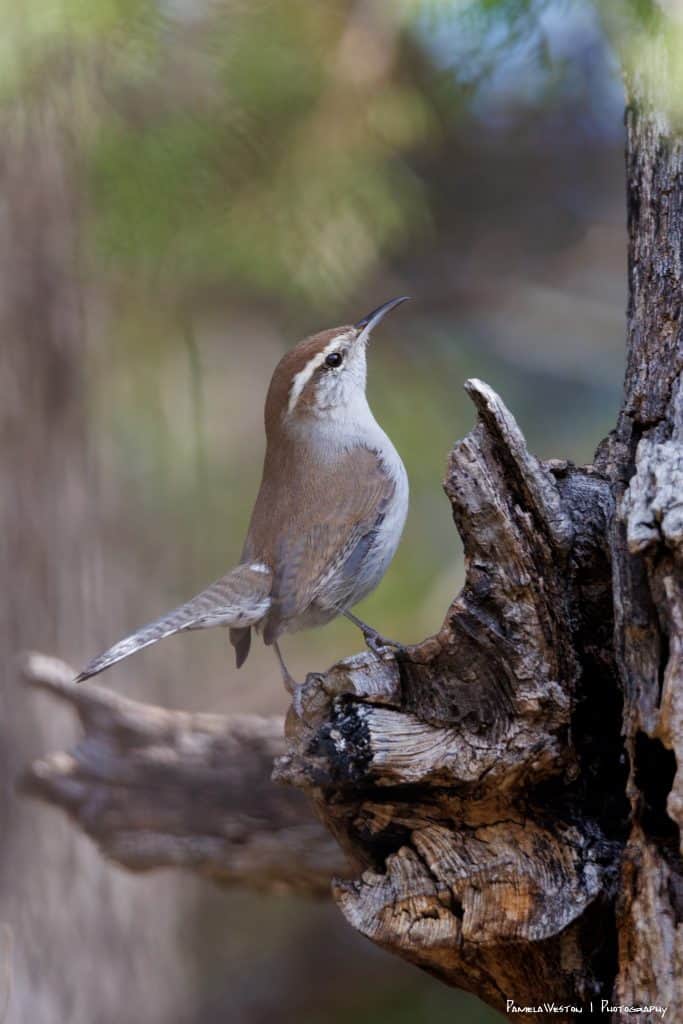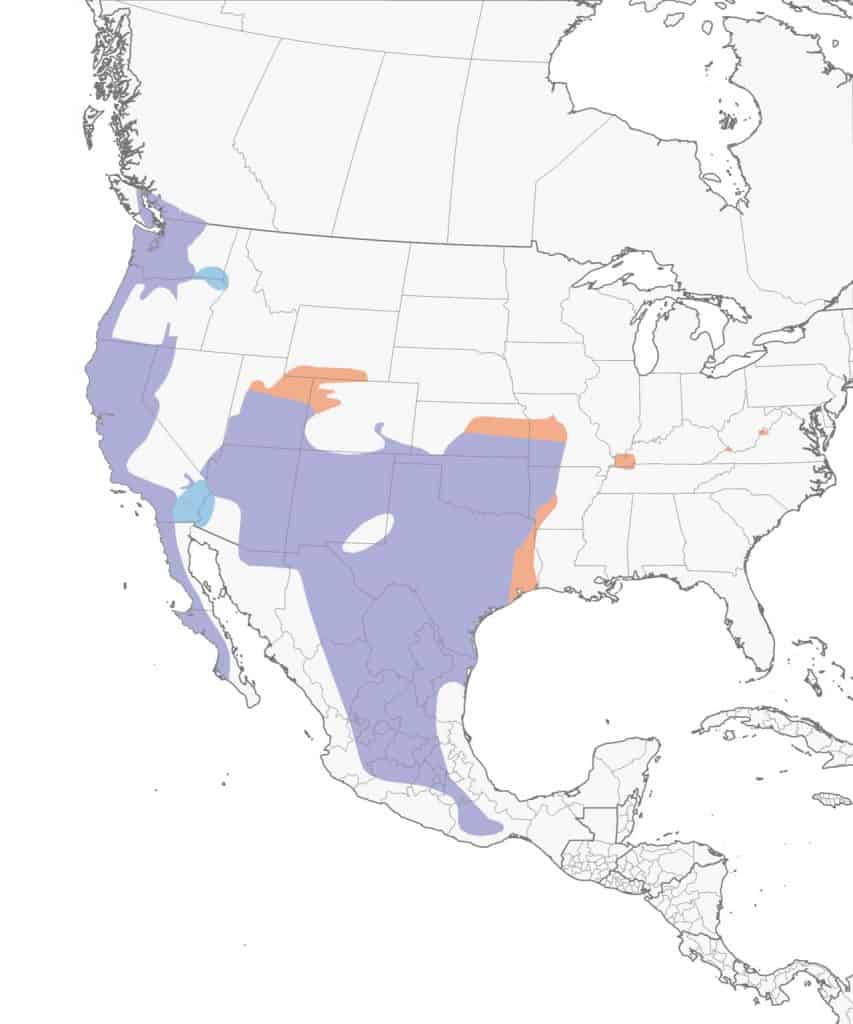
Appearance: The Bewick’s wren is a small bird about 5.25″ long. They’re slender with a long tail, usually cocked upward and twitching from one side to the other. In the southwest part of their range the upper parts are gray/brown, along the Pacific coast they’re brown, and reddish brown for those that live in the eastern part of the range. Underneath they’re soft gray. They also have a bold white stripe above the eye and white bars near the tip of the tail.
Diet: Insects and spiders that they uncover from bark crevices. In the winter they’re open to eating seeds, fruit, and other plant matter.
Feeder food: Hulled sunflower seeds, suet, peanut hearts, and mealworms.
Habitat: Bewick’s wrens prefer brushy woodlands, coast and desert scrub, chaparral (scrubland plant communities of deciduous shrubs and trees 8′ or under), backyards, and parks.
Nesting: Nest placement can be on the ground in a rocky crevice, an old woodpecker cavity, or on a ledge less than 30′ up. They build a cup-shaped nest from sticks, grasses, and other dried vegetation. They have 1-3 broods/year, about 5-7 white eggs with red/brown spots per brood, incubate for 14-16 days and fledglings leave the nest at about 14-16 days.
Migration: Bewick’s wrens are not migrators. They live in their year-round range including Washington, Oregon, California, Nevada, Utah, Arizona, Colorado, New Mexico, Texas, Kansas, Oklahoma, Arkansas, and Missouri. In Canada, they can be found in the southwest corner of British Columbia.
While they’re not migrators, small populations expand to the eastern parts of Washington and California. During the breeding season, a small population expands further north and east of the year-round range.


